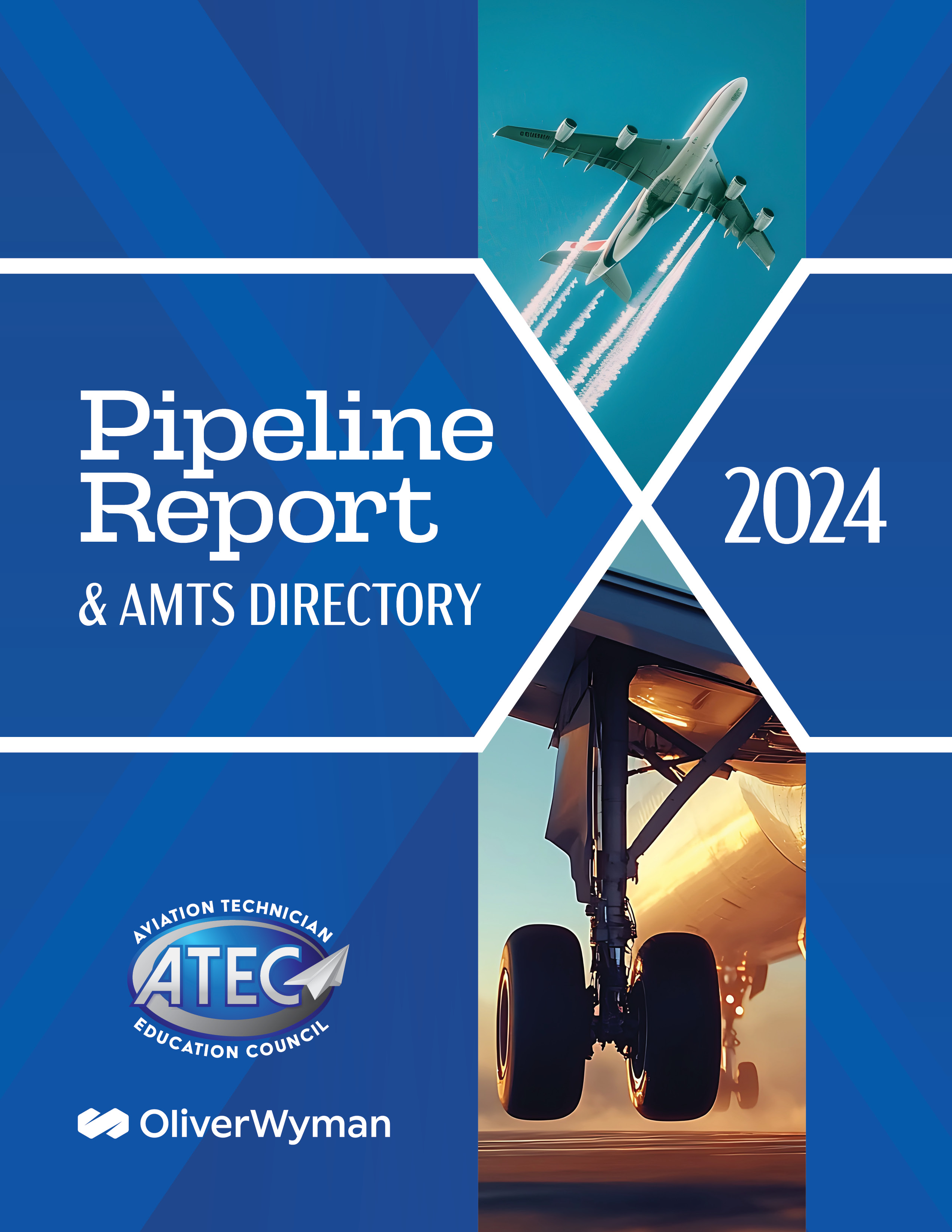Mechanic Workforce Pipeline Flow Increasing, But Demand Still Out-pacing Supply
 Latest Pipeline Report highlights progress, opportunities to meet growing demand for certified mechanics.
Latest Pipeline Report highlights progress, opportunities to meet growing demand for certified mechanics.
JENKS, Oklahoma-- Barriers in the U.S. aviation technician workforce pipeline are slowly being removed, but the projected growth rate of certified mechanics remains insufficient to meet demand, a new joint report from Aviation Technical Education Council (ATEC) and Oliver Wyman concludes.
The 2024 edition of the Pipeline Report, produced annually by ATEC and Oliver Wyman to spotlight U.S. airframe and powerplant (A&P) mechanic workforce trends, highlights several encouraging developments. Among them: new mechanic certificates jumped 32% in 2023, enrollment at aviation maintenance technician schools (AMTS) was up 6%, and the military pathway for new mechanic certifications continued its strong, annual double-digit growth pattern, as 32% more veterans obtained FAA A&P certification compared to 2022.
Despite these tailwinds, the influx of new mechanics will be insufficient to meet commercial aviation's projected needs amid rising demand for air travel for the next decade. The current shortage is estimated at 9% and will reach nearly 20%--equivalent to about 25,000 certificated mechanics--by 2028, the report finds.
Add in demand for non-airline sectors, including business aviation and the emerging urban air mobility segment, and the shortfall becomes even larger.
"We are seeing some positive changes in the aviation technician workforce pipeline," said. "But the pace of retirements combined with aviation's projected growth means demand continues to outpace supply. ATEC is focused on tapping promising resources for new A&P candidates, including our veterans and under-represented populations. We also continue to work tirelessly to remove hurdles in the pathway, such as a lack of instructors and examiners."
Among the areas ripe with opportunity: AMTS enrollment is rising, but schools report an average capacity of just 65%. Filling the rest requires a combination of increasing awareness through local and national programs, and adding more resources such as instructors and training tools.
Increasing the number of veterans pursuing their A&Ps will be one of ATEC's priorities in the coming years. Last year, about 1,500 veterans with aviation maintenance experience earned their certificates. But ATEC estimates that about 22,000 service members with aviation maintenance backgrounds leave the military each year. Closing that gap will help the industry meet rising demand for well-trained technical professionals.
The FAA has pledged to increase designated mechanic examiner (DME) availability by incorporating DMEs into the Organization Designation Authorization (ODA) program. An ATEC priority, ODA DMEs may be available as soon as next year.
Among the 2024 Pipeline Report's key takeaways:
- A three-year period of A&P candidates deferring their goal of becoming certificated ended in 2023, as new mechanic certificates shot up 32%, totaling a record 9,400. This surge can be attributed to several factors, including an end (and apparent reversal) of deferrals, the development of new work-based certification pathway programs, a rise in student certifications in A&P programs, and increased enrollment.
- Despite the uptick in 2023, the current retirement bubble means the influx of new mechanics will be insufficient to meet replacement needs for the next decade. The current shortage is estimated at 9%, and will reach nearly 20%, equivalent to about 25,000 certificated mechanics, by 2028.
- A lack of resources is constraining AMTS throughput. Many schools report maximum practical capacities that are below their allowable capacities due to shortages of instructors, facility space, or other resources. Designated Mechanic Examiner (DME) shortages are another key constraint. ATEC estimates that the industry needs 30% more DMEs just to account for the current flow of graduates.
- The percentage of women among newly certificated A&P mechanics is rising, but slowly. Women make up just 2.8% of the mechanic population, up from 2.2% a decade ago. Rates in the pipeline are slightly better: 6.7% of new AMTS-sourced certificated mechanics are women, compared to 4% of those sourced from military or civilian experience.
- The AMTS student load factor, which measures the ratio of available A&P program seats to enrolled students, has improved to 65%. Nationally, there are an estimated 12,000 seats available within the A&P school network. Despite commendable efforts and initiatives that boosted AMTS enrollments by 5% last year, one in every three available seats remains unfilled.
